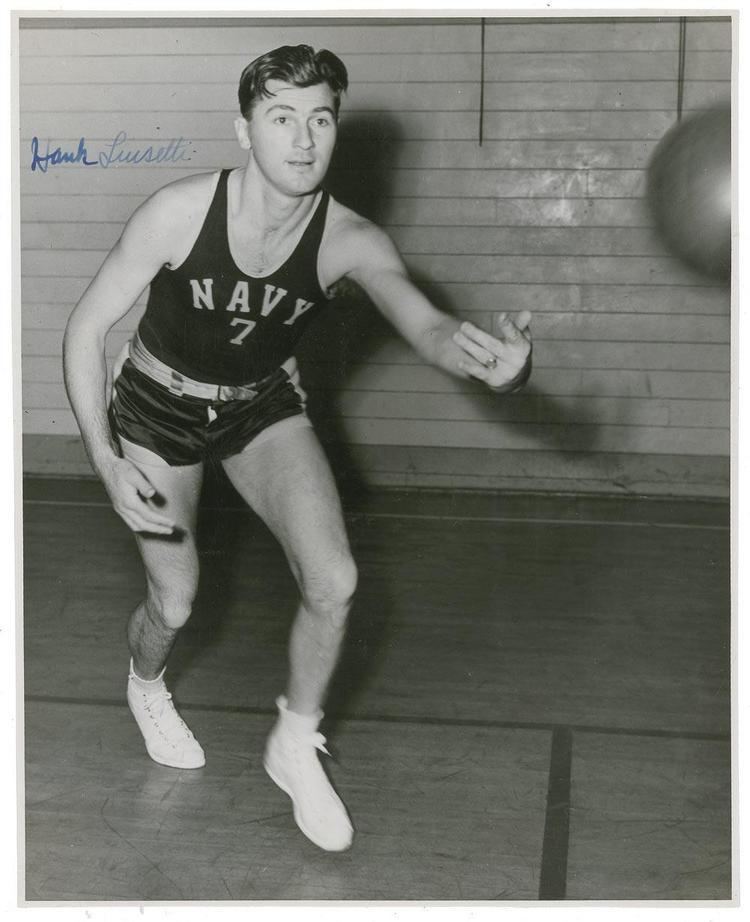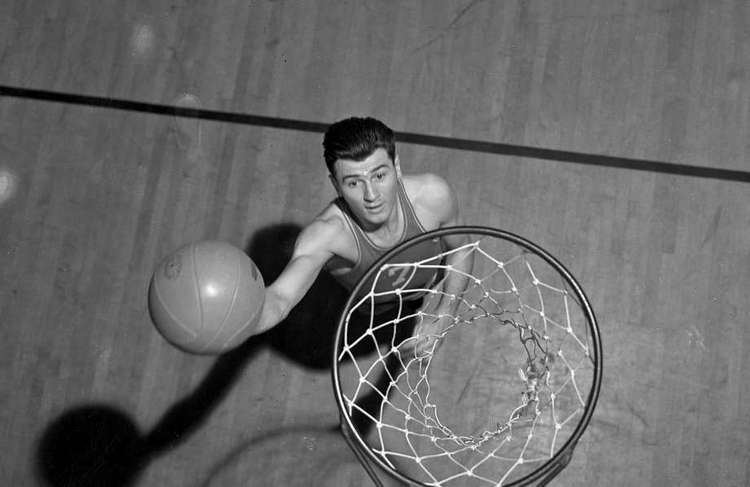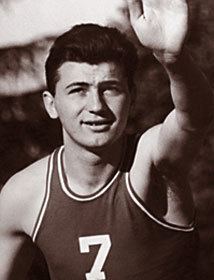Nationality American Number 7 Weight 84 kg Height 1.88 m | Listed weight 185 lb (84 kg) Role Basketball Player Listed height 6 ft 2 in (1.88 m) Name Hank Luisetti Positions Basketball positions | |
 | ||
Born June 16, 1916San Francisco, California ( 1916-06-16 ) Education Stanford University, Galileo Academy of Science and Technology | ||
Campus confessions 1938 hank luisetti
Angelo-Giuseppi "Hank" Luisetti (June 16, 1916 – December 17, 2002) was an American college men's basketball player. He is considered to be of the great innovators of the sport. In an era that featured the traditional two-handed set shot, Luisetti developed the running one-handed shot, an early version of the jump shot. Equipped with such an offensive weapon, Luisetti became one of the most dominant players in American college basketball history. While at Stanford, he joined Delta Kappa Epsilon Fraternity.
Contents

AMERICAN BASKETBALL BALLET Project 49
Biography

A graduate of Galileo High School in his native city, San Francisco, he went on to play for Stanford. He became the first player to score 50 points in a game on January 1, 1938, against Duquesne. Luisetti was named the second-best player of the mid-century (behind George Mikan) by an Associated Press poll of sportswriters and broadcasters in 1950.

Luisetti’s influence was aided by a celebrated game between Long Island University and Luisetti’s Stanford Indians. Long Island had a 43-game winning streak at the time of the game. The game was played in the evening of December 30, 1936, in Madison Square Garden and a crowd of 17,623 was on hand to see Long Island, the nation's No. 1 team, play Stanford.
Stanford was the defending Pacific Coast Conference champion from the 1935 season and six years later would win an NCAA championship. Still, they were underdogs. The crowd, while not expecting to see their local favorites lose, were intrigued by Luisetti, then a 6-foot-2, 185-pound sophomore. They knew that he shot the ball with one hand while he hung in the air, in stark contrast to the two-handed set shots or hook shots that were commonly attempted in those days.
Although Luisetti scored only 15 points on five field goals and five free throws, Stanford ended the LIU winning streak with a 45-31 victory. The fact that this occurred in the media capital of the country, however, resulted in something more far-reaching. The publicity surrounding Luisetti's shooting style changed the game forever.
Luisetti is often credited with inventing the jump shot, although others were doing it during the 1930s as well. One possible originator was John Miller Cooper. Still, Luisetti definitely popularized it.
Some have mistakenly said that Luisetti kept both feet planted on the court when taking his shots, but it seems clear that he was a jumper. "I'd get the ball, take a dribble or two and jump and shoot on the way up. I didn't jump and shoot at the height of my jump, the way they do now. I'd let the ball go right near my face; I'd push and shoot, off my fingertips." Furthermore, he shot "the ball with one hand while he hung in the air, in defiance of basketball style."
He was an all-around player, whose play and shooting were exciting. "Hank could take over a game like Michael Jordan if he had to," said former Stanford teammate Don Williams. "He was an absolute artist on the basketball court."
Luisetti contracted spinal meningitis while serving in the Navy, ending his basketball career. He never played in the NBA, but "in 1950, the nation's sportswriters voted him the second-best player in the first half of the century."
Among his other accomplishments, he was a naval officer during World War II.
He died in San Mateo, California, in 2002.
Additional facts on Luisetti:
